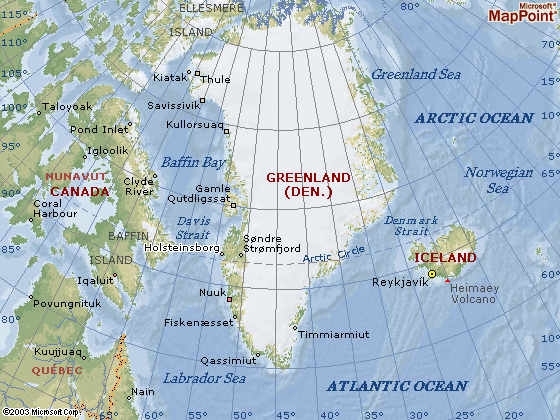The Halappanavar family now to take their case to European court
Gerard O’Donnell, solicitor for Praveen Halappanavar (above right), said his client had decided to take a case to the European Court of Human Rights.
The husband of the late Savita Halappanavar (Praven) has decided to proceed with an application to the European Court of Human Rights.
He decided on this option because the Minister for Health James Reilly did not agree to a public inquiry into the circumstances of her death by a deadline, set by the family, of today.
Praveen Halappanavar’s solicitor, Gerard O’Donnell said he was identifying a team of junior and senior counsel for the action. “I expect to sit down with them and my client early next week to draw up papers to submit to the European court”.
Mr Halappanavar has said the two inquiries established into his wife’s death did not satisfy him or her family.
The first was set up by the HSE, while a second, by the Health Information and Quality Authority (Hiqa), while separate to the former, was instigated at the HSE’s request. Both will be held in private.
Mr O’Donnell said the family had received offers of support from women’s and human rights groups across the world in his quest for a public inquiry into her death.
“So as we speak I am identifying a team of junior and senior counsel. I expect to sit down with them and my client early next week to draw up papers to submit to the European court.
“We have had a lot of offers from international organisations, women’s and human rights, to support us in this,”
He had had an acknowledgement from the office of Minister for Health, James Reilly, to his letter sent on Monday calling for a public inquiry.
“They said they were ’looking at’ the request.”
Ms Halappanavar died on October 28th at Galway University Hospital, having presented a week earlier with back pain. She had been 17 weeks pregnant and was found to be miscarrying.
Mr Halappanavar has said she asked repeatedly for a termination of the pregnancy but was refused, he says, as the foetal heartbeat was still present and “this is a Catholic country”.
The miscarriage lasted from October 21st until 24th, according to Mr Halappanavar. His wife contracted septicaemia and died on October 28th.
Irish Coroner has no regrets over his suicide remarks


Coroner Terence Casey said the rate of suicide is reaching crisis point
A coroner who claimed people who die by suicide do not think about the hurt and sorrow they leave behind has been reported to the Justice Department for his comments.
In an interview in today’s Irish Examiner, Kerry coroner Terence Casey said comments he made earlier this year, after suicide verdicts were returned in six out of eight inquests before his court, led to him being reported to the Department of Justice.
“There was one comment I passed, where I said that if only those who committed suicide could see what I see, the pain and the misery and the suffering left behind, they probably wouldn’t do it,” said Mr Casey.
“I’ve been reported to the Department of Justice for making comments like that. The department asked me for a report. I reported back and they accepted it, and that was that. But they still had to go through the procedures and investigate.”
In the past, Mr Casey has hit the headlines for claiming that tougher drink driving laws were responsible for an increase in suicides among older men.
Mr Casey said society was less inclined to examine the reasons why an older person might take their own life, while claiming that a lack of respect for their lives is one reason why younger people do it.
“Peer pressure has a lot to do with it,” said Mr Casey. “I think the lack of respect for one’s life is another thing. The lack of respect for one’s neighbour’s property, for one’s own property, for one’s own life, has gone downhill over the past 10, 15 years.”
He also said the removal of corporal punishment “was the downfall of a lot of things” and that there was a general lack of punishment in society.
“We no longer have the same respect for our neighbour,” said Mr Casey. “We don’t have the same respect for the gardaí. I think it’s something that has to be brought back — more respect for your life, your family…
“Personally, I think the day we got rid of corporal punishment, was the downfall of a lot of things. The respect for your neighbour’s property has gone out the door, since corporal punishment went out the door.
“We were afraid of getting a slap when we went to school. We were afraid of getting a beating from our parents if we did something wrong. That no longer happens. I don’t think you can blame parents or schools… There’s just a general lack of punishment.”
Mr Casey said that while his frankness on the subject of suicide had caused him trouble, he would continue to speak out.
New formula calculator calculates baby’s obesity risk
A simple formula can predict at birth a baby’s likelihood of becoming obese during childhood, researchers say.
The formula, which is available as an online calculator, estimates the child’s obesity risk based on its birth weight, the body mass index of the parents, the number of people in the household, the mother’s professional status and whether she smoked during pregnancy.
The researchers behind the study hope their prediction method will be used to identify infants at high risk and help families take steps to prevent their children from putting on too much weight.
The researchers developed the formula using data from a study set up in 1986 following 4000 children born in Finland.
They initially investigated whether obesity risk could be assessed using genetic profiles, but the test they developed based on common genetic variations failed to make accurate predictions.
Instead, they discovered that non-genetic information readily available at the time of birth was enough to predict which children would become obese. The formula proved accurate not just in the Finnish cohort, but in further tests using data from studies in Italy and the US.
“This test takes very little time, it doesn’t require any lab tests and it doesn’t cost anything,” said Professor Philippe Froguel, from the School of Public Health at Imperial College London, who led the study.
“All the data we use are well-known risk factors for childhood obesity, but this is the first time they have been used together to predict from the time of birth the likelihood of a child becoming obese.”
The 20 per cent of children predicted to have the highest risk at birth make up 80 per cent of obese children. The researchers suggest that services such as dieticians and psychologists could be offered to families with high-risk infants to help them prevent excessive weight gain.
“Once a young child becomes obese, it’s difficult for them to lose weight, so prevention is the best strategy, and it has to begin as early as possible,” said Professor Froguel. “Unfortunately, public prevention campaigns have been rather ineffective at preventing obesity in school-age children. Teaching parents about the dangers of over-feeding and bad nutritional habits at a young age would be much more effective.”
Although common genetic variants did not prove to be helpful for predicting childhood obesity, the researchers say about one in 10 cases of obesity are caused by rare mutations that seriously affect appetite regulation.
Tests for these mutations could become available to doctors in the next few years as the cost of DNA sequencing technology falls.
10% of Ireland’s teens would not seek advice on sexuality


One in ten of 13-year-old would not approach anybody for information on sexuality
A national study of 13-year-olds in Ireland has shown that one in ten would not approach anybody for information on sexuality.
Almost 7,500 teenagers were interviewed for the study and were asked who they would most likely turn to for information on relationships and sexuality.
Almost 7,500 teenagers were interviewed for the study and were asked who they would most likely turn to for information on relationships and sexuality.
Over four in ten said they would ask their mother, but only 6% (all boys) opted for their father.
Almost a quarter of those interviewed favoured going to friends, while 9% said they depended on teachers; 6% depended on the internet and print media, but 10% said they would go nowhere for such advice.
The study – ‘Growing Up In Ireland’ – was sponsored by the Department of Children and Youth Affairs.
Senior civil servant Jim Breslin called the sex education findings “worrying”.
He said it was very important that his Department continued to develop and support the consistent teaching of Relationship and Sexuality Education.
The study also found that 60% of 13-year-olds exercised six or more days in a fortnight, but almost a quarter of those surveyed were overweight or obese.
Almost 40% of girls in the age group were trying to lose weight.
Almost 40% of girls in the age group were trying to lose weight.
The research found that the number of their families reporting financial difficulties had doubled since the group was last interviewed four years ago.
They said the most frequently recorded effects were reduction in wages and social welfare payments, and families not being able to afford luxuries.
All of those interviewed for this study had been previously interviewed at aged nine.
The survey showed they were mostly positive about school and their teachers. However, 13-year-olds in first year were more positive than 13-year-olds in second year.
The principal investigator of the study said obesity has a huge impact on a child’s life and would have an effect in their later lives.
Speaking on RTÉ’s Morning Ireland, Professor James Williams, said that being overweight as a young person increases the risk of developing illnesses such as asthma and diabetes.
He said the study showed differences in terms of gender and in terms of the social background and that boys were more inclined to exercise than girls and it was more common for children from socially advantaged backgrounds to exercise.
Prof Williams said the study showed that children who are overweight and obese are trying to do something about it.
It also showed that children are getting on well with their parents and they said they have more fun with their fathers.
He said the study did show some disengagement as students progress through the second level school system.Strong focus on US in Tourism Ireland 2013 plans
Strong focus on US on Tourism Ireland 2013 plans


Minister Leo Varadkar TD and Niall Gibbons, Tourism Ireland chief executive
Tourism Ireland plans to roll out a new three-year marketing plan in the US in 2013 called ‘Make Ireland Jump Out’ with the aim of increasing the number of American visitors by 20pc between 2013 and 2015.
Stating that North America and Mainland Europe hold the key to tourism growth next year, the agency has predicted a 5pc increase in visitor numbers to the island to 7.6 million, contributing €3.7bn to the economies, north and south.
Mainland Europe now delivers more holidaymakers and revenue than Great Britain. For 2013, Tourism Ireland aims to welcome almost 2.5 million European visitors (an increase of 4.4pc).
The organisation’s resources will be prioritised in the two key markets of Germany and France, followed by Italy, the Nordics, Spain and the Netherlands.
And a new strategy for Great Britain – ‘GB Path to Growth’ – will be implemented, to grow the number of British holidaymakers by 20pc, ie an additional 200,000 holiday visitors per year by 2016.
Details of Tourism Ireland’s new website Ireland.com have also been unveiled. The new site, which will go live in time for January 2013, will appear in 11 different language versions for over 30 individual markets around the world.
It has been redeveloped to capitalise on the importance of the internet in planning and booking holidays and to harness the phenomenal growth in social media.
 The major focus of Tourism Ireland’s promotions next year will be The Gathering Ireland 2013, which aims to attract 325,000 extra visitors next year.
The major focus of Tourism Ireland’s promotions next year will be The Gathering Ireland 2013, which aims to attract 325,000 extra visitors next year.
Tourism Ireland will promote The Gathering throughout the year to the 70 million people across the world who feel linked by family, friends or otherwise with Ireland.
Regarding 2012 performance, latest estimates indicate that, by year end, 7.27 million people will have visited the island in 2012, generating revenue of around €3.51bn.
Niall Gibbons, chief executive of Tourism Ireland, said: “2012 has been something of a mixed year, with Dublin and other cites, as well as the tourism ‘honeypots’ doing quite well, but with rural and outlying areas finding the going harder.
“Visitor numbers from North America and long-haul markets like Australia look set to reach or even exceed the records levels of 2007. The performance of Mainland European markets has also been quite strong. However, visitor numbers from Great Britain, our largest tourism market, have been disappointing, with a flat economy and weak consumer confidence having a significant impact on travel by Britons throughout the year.
Sea-level rise from polar ice melt finally quantified


Melting of polar ice sheets has added 11 mm to global sea levels over the past two decades, according to the most definitive assessment so far.
More than 20 polar research teams have combined forces to produce estimates of the state of the ice in Greenland and Antarctica in a paper in Science.
Until now different measurement means have produced a wide range of estimates with large uncertainties.
But sea-level rise is now among the most pressing questions of our time.
Polar ice has a tremendous capacity to cause massive rises – with huge potential impacts on coastal cities and communities around the world.
But the remoteness and sheer size of the ice sheets mean accurate measurements are a serious challenge even for satellites which have to distinguish snow from ice, and the rise of the land from the shrinking of the ice.
One number
The new estimate shows that polar melting contributed about one-fifth of the overall global sea level rise since 1992; other factors include warming that causes the seawater to expand.
The study does not seek to forecast future change.
Supported by US and European space agencies Nasa and Esa, the research brought together data from satellites measuring the surface altitude, the flow of the glaciers and the gravitational effect of the ice mass to produce the first joint assessment of how the ice sheets are changing.
The results show that the largest ice sheet – that of East Antarctica – has gained mass over the study period of 1992-2011 as increased snowfall added to its volume.
However, Greenland, West Antarctica and the Antarctic Peninsula were all found to be losing mass – and on a scale that more than compensates for East Antarctica’s gain.
The study’s headline conclusion is that the polar ice sheets have overall contributed 11.1mm to sea level rise but with a “give or take” uncertainty of 3.8mm – meaning the contribution could be as little as 7.3mm or as much as 14.9mm.
The next big challenge… is to predict what will happen over the next century”
The combined rate of melting from all the ice sheets has increased over the past 20 years with Greenland losing five times as much now as in 1992.
The lead author of the research, Prof Andrew Shepherd of Leeds University, said the study brought to an end 20 years of disagreement between different teams.
“We can now say for sure that Antarctica is losing ice and we can see how the rate of loss from Greenland is going up over the same period as well,” he added.
“Prior to now there’d been 30 to 40 different estimates of how the ice sheets are changing, and what we realised was that most people just wanted one number to tell them what the real change was.
“So we’ve brought everybody together to produce a single estimate and it turns out that estimate is two to three times more reliable than the last one.”
Prof Shepherd said the measurements were in line with climate change predictions.
“We would expect Greenland to melt more rapidly because the temperatures have risen,” he said.”We would expect West Antarctica to flow more quickly because the ocean is warmer. And we would also expect East Antarctica to grow because there’s more snowfall as a consequence of climate warming.”
Dr Erik Ivins, a co-author from Nasa’s Jet Propulsion Laboratory, said one issue that had “plagued” ice-sheet studies was land springing up in a process called “post-glacial rebound” – with effects as high as 1cm per year.
But the use of GPS to measure vertical motion and estimates of the ice sheets’ movements over the past 21,000 years had allowed the rebound effect to be properly understood.
“The new estimates from space gravity for Antarctica’s ice sheet loss rates are lowered by using these improved post-glacial rebound models,” Dr Ivins said.
“The results, then, are more consistent with other space observations that were taken over the past decade. This is one of the major findings in the inter-comparison effort by this international team of scientists.”
The findings are in line with the broad range of forecasts in the 2007 assessment by the UN’s Intergovernmental Panel on Climate Change.
And they were completed in time to be considered for the next report, due in September next year.
Another author, Dr Hamish Pritchard of the British Antarctic Survey, said: “The next big challenge – now that we’ve got quite a good understanding of what’s happened over the last 20 years – is to predict what will happen over the next century.
“And that is going to be a tough challenge with difficult processes going on in inside the glaciers and ice sheets.”




No comments:
Post a Comment